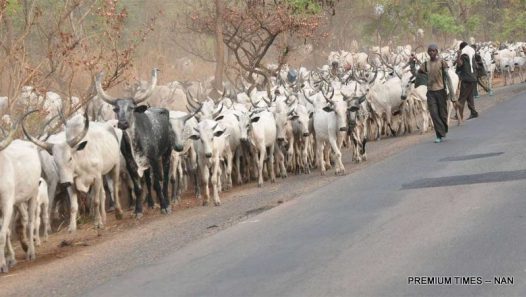
The clashes between herdsmen and farmers in some states in Nigeria, especially in Benue, Taraba and Kaduna states should not be allowed to generate further by incitement and intemperate statements. The committee set up by the government to solve this problem must come out with a holistic solution which will deal with the problems of encroachment into farmlands, incitement and credible plans to integrate the herdsmen fully into the Nigerian society. The grazing of animals on cattle trails in the 21st century is to say the least antiquated. The focus should therefore be on modernisation of cattle rearing which will maximize the benefits therein in terms of job creation, food security, and eventually end the vexatious farmers/ herdsmen conflicts. India, China, USA, Pakistan and countries with large populations depend on milk and dairy products to fight hunger, malnutrition, unemployment and promote social harmony.
India is a good example with an annual production of 163 million metric tonnes of milk which is about 10% of worlds output.
In India, cattle are reared within the confines of village communities, and farmers cooperatives, mainly for milk production and rarely for the meat. The attachment to the cattle in India is so strong that it is called mother, which in a sense is true because the cow provides food and nourishment for the country’s huge population.
The European dairy farm model is also within confined paddocks which in most cases are not much bigger than a football pitch. The animal fodder is grown on location or in other farms which specialize in growing hays, grains and other animal feeds.
The milk produced in these farms are collected, pasteurized and packed in local dairy plants for local and worldwide consumption as infant foods, cheese, yoghurt, butter and other dairy products.
The average milk yield per cow in Europe is between 40-50 liters per day as compared to the paltry 1-2 liters yield of the Nigerian cow due to poor feeding, poor health and stress on the grazing trails. The milk producing years of a cow is about 5-7 years, after which it is culled for the meat. The profit in the industry is derived mainly from the dairy products which by some estimates could be in excess of 15,000 usd per milking cow per year. In Nigeria, cattle is reared mainly for the beef and minimally for the milk, which takes away the bulk of the profit in the business. The focus should therefore be on milk production which would contribute substantially to the national economy and at the same time stop the perennial conflicts between herdsmen and farmers in the country.
The establishment of ranches and grazing lands may seem attractive and a simple way out of the herdsmen/ farmers clashes. The constraints of land and land ownership in tribal areas is also a big challenge. Ranches are established in countries with huge pastoral lands, like in the lush Pampas of Argentina, grass lands, which alone covers over 700,000 square kilometers of land mass or about 80% of Nigeria’s entire territory. It is the same with the Prairies of USA/ Canada and the mighty Eurasia Steppes in Russia, which is about 17 times the size of Nigeria. The Indian and European models are therefore best suited for the Nigerian situation. Dairy farming however requires special skills and a certain level of education, which the itinerant herdsmen do not possess for now. However, their native and rustic skills should be a useful asset which would accelerate their integration into modern animal husbandry methods. The education of the nomadic herdsmen should therefore be given priority as the first and most important step in the conversion and integration process.
The existing nomadic educational system is not good enough. It must be modernized with added agricultural technical skills which would be useful in the field. The Federal Government should take the lead in establishing the proposed dairy plants in states which are ready to accept them. The private sector and foreign investors will thereafter follow the footsteps of the government and key into the programme.
The tension in the country is now so high that grazing should be limited to states which are more receptive to the Fulani people or are of predominantly Fulani ethnic group, such as Adamawa, Kebbi, Sokoto, Zamfara, Bauchi and Jigawa states. The eventual success of the ventures would attract more states and investors to the project. For now, grazing trails should not be imposed on states which are still hurting from the clashes and those adverse to it.
• Ambassador Rasheed was director of Trade and Investments, Ministry of Foreign Affairs.
END

Be the first to comment